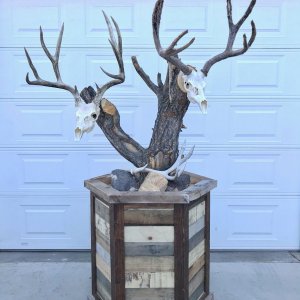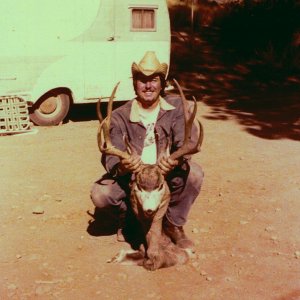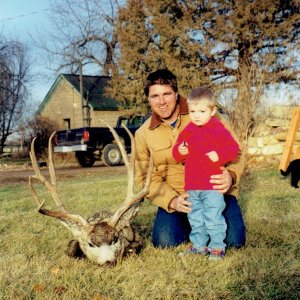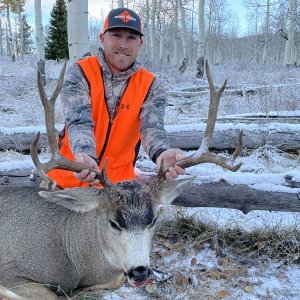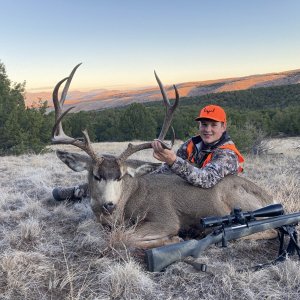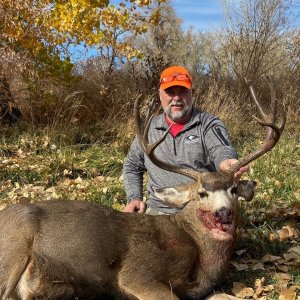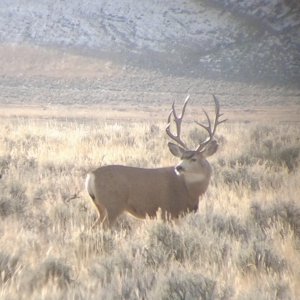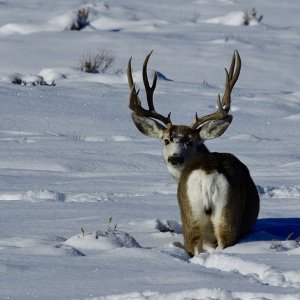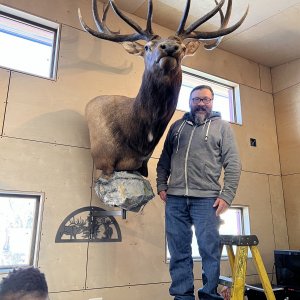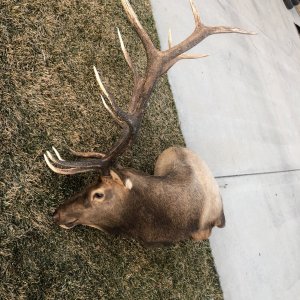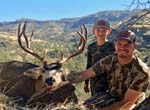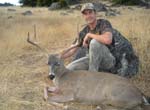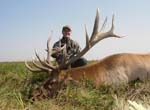Yalo
Active Member
- Messages
- 134
Really enjoyed this year’s G3 hunter reports. Wish a half dozen more would report?
But my pondering post 2023 G3 zone hunt:
During discussions of the 2023 G3 hunts, we saw posts with requests for better or different herd management. One member suggested “2 point only” hunts and some wanted “3 point only hunts” to favor the gene pool of 4 points or better. And reduce the 2 and three point dominance? If I got the right?
In a sense this is what we do for every zone hunt. Folks are out for the big one and target them but take smaller bucks percentage wise usually. For instance, in X9A 30 percent of harvest in 2022 was 4 points or better. In X9B 76 percent of the take were forks and some of the deer in G3 reside in X9B all year? Just that in the G3 hunt time period, the odds favor the hunters to have a higher chance of taking 4 points or better for several reasons?
Is it a first come first serve situation? Less numbers of smaller bucks make it a greater chance of the larger bucks procreating?
To me all that management hunts do is reduce the numbers of 2 and 3 points, and not entirely sure if it enhances the 4 point gene pool? I am not on board at this time.
Did these management hunts mean no 4 or 5 point harvested hunts for those years?
Regardless, alternately one could also say halt the G3 hunt entirely periodically?
Do we know that the G3 hunt starts late enough for the trophy animals to breed? That is HS’s buck may not really have migrated much and little snow this year. For years now the Nov-Dec storms are not as cold or with large precipitation amounts in my experience to drive any larger bucks down to lower elevations? No snow right now at Tom,s Place and seen feet there at Thanksgiving?
My understanding is that some benches at 8000-9000 feet (2 to 3 thousand foot climb) hold deer similar to highsierra’s (HS) in October and his was at 7500? Regardless (HS) killed a fine buck. But no significant snow to speak of this year to drive him down?
Note, HS’s buck picture is of him bedded and the buck is not chasing does as many seem to do around December 2? Or does he come down at night? However not a wildwife biology person, but was not HS’s buck able to pass genes for the last several years as well?
Seems the thrust is larger bucks at times are the farthest from where the does are congregating on December 2? Not always though possibly? And HS indicated the larger bucks come down to service does at night. The consensus has been December 2 is enough time for the bulk of the rut to take place, and to pass the larger bucks’ genes? Maybe we are passing the genes and the larger bucks are well aware of how to stay out of hunter’s sights and remain unharvested or spotted, just wondering? Seen the larger horned bucks actually crawl to avoid detection and not seen smaller bucks do that?
Frankly do not believe anyone knows what the best management scheme for G3 is or any unit for that matter. Coupled with factors like genes, we have age, feeding habitat, predators, and or drought situations.
Of note we hunted another area in the late nineties and my hunting partner took a small fork (I passed on that one and all that day) and saw a small 3 pointer and a large wide and tall fork similar to G3 large forked horn bucks. We saw no 4 points or better?
Is this just a normal situation for the Sierras and not an indicator of trouble for the G3 zone hunt? For G3, the folks are seeing way more deer than they do in earlier season zones, so seems right to see more categories of deer? Are the antlered percentage numbers in G3 different than other areas typically? I do not know?
Looked at harvest statistics for G3 hunt seasons 2022, 2019 and 2017 and average 4 points harvested or better was 76.7 percent of harvest reported for those years? For hunt years 1998, 2001, and 2003 the average harvest was 59 percent of reported take? Notice reported and not estimated or accounting for non-reported kills? However, there is no data on spread or typical or non-typical horns or range conditions or horn mass to compare different time periods? My point is in years past my quick limited view of data was there were fewer 4 points or better racks harvested per the data percentage wise? Maybe more deer then and or folks did not bust their ass for bigger bucks since fairly large deer easier found?
Some are looking to the DFG to manage G3 better. In my opinion if lion populations or kills are not addressed a moot point in my opinion for any zone. And weather and habitat quality seem basically beyond their control?
Hiked a place in So Cal where I saw at least 8 large bucks during the post rut decades ago and now it is hard to find 8 tracks (before lion protection I might add). The DFG seems to have no solution that works for more numerous or larger deer for that area, so why expect some increase in trophy bucks in G3? We could hope? And all seem to agree that numbers of deer are down from years past so one would expect fewer numbers of larger rack animals one would think?
Like HS asked, maybe G3 remains a valid hunt zone. Considering that HS and Tek took fine animals in 2023, this probably meets the DFG’s goal for the area in providing a rewarding hunt in California for mule deer. But like my dad said, deer are where you find them, and G3 is a chance to actually find them still and be able to come up with comments like too many forks and three pointers? I say leave the small number-of-points- bucks alone, some may sprout a point or inch spread or two later?
But my pondering post 2023 G3 zone hunt:
During discussions of the 2023 G3 hunts, we saw posts with requests for better or different herd management. One member suggested “2 point only” hunts and some wanted “3 point only hunts” to favor the gene pool of 4 points or better. And reduce the 2 and three point dominance? If I got the right?
In a sense this is what we do for every zone hunt. Folks are out for the big one and target them but take smaller bucks percentage wise usually. For instance, in X9A 30 percent of harvest in 2022 was 4 points or better. In X9B 76 percent of the take were forks and some of the deer in G3 reside in X9B all year? Just that in the G3 hunt time period, the odds favor the hunters to have a higher chance of taking 4 points or better for several reasons?
Is it a first come first serve situation? Less numbers of smaller bucks make it a greater chance of the larger bucks procreating?
To me all that management hunts do is reduce the numbers of 2 and 3 points, and not entirely sure if it enhances the 4 point gene pool? I am not on board at this time.
Did these management hunts mean no 4 or 5 point harvested hunts for those years?
Regardless, alternately one could also say halt the G3 hunt entirely periodically?
Do we know that the G3 hunt starts late enough for the trophy animals to breed? That is HS’s buck may not really have migrated much and little snow this year. For years now the Nov-Dec storms are not as cold or with large precipitation amounts in my experience to drive any larger bucks down to lower elevations? No snow right now at Tom,s Place and seen feet there at Thanksgiving?
My understanding is that some benches at 8000-9000 feet (2 to 3 thousand foot climb) hold deer similar to highsierra’s (HS) in October and his was at 7500? Regardless (HS) killed a fine buck. But no significant snow to speak of this year to drive him down?
Note, HS’s buck picture is of him bedded and the buck is not chasing does as many seem to do around December 2? Or does he come down at night? However not a wildwife biology person, but was not HS’s buck able to pass genes for the last several years as well?
Seems the thrust is larger bucks at times are the farthest from where the does are congregating on December 2? Not always though possibly? And HS indicated the larger bucks come down to service does at night. The consensus has been December 2 is enough time for the bulk of the rut to take place, and to pass the larger bucks’ genes? Maybe we are passing the genes and the larger bucks are well aware of how to stay out of hunter’s sights and remain unharvested or spotted, just wondering? Seen the larger horned bucks actually crawl to avoid detection and not seen smaller bucks do that?
Frankly do not believe anyone knows what the best management scheme for G3 is or any unit for that matter. Coupled with factors like genes, we have age, feeding habitat, predators, and or drought situations.
Of note we hunted another area in the late nineties and my hunting partner took a small fork (I passed on that one and all that day) and saw a small 3 pointer and a large wide and tall fork similar to G3 large forked horn bucks. We saw no 4 points or better?
Is this just a normal situation for the Sierras and not an indicator of trouble for the G3 zone hunt? For G3, the folks are seeing way more deer than they do in earlier season zones, so seems right to see more categories of deer? Are the antlered percentage numbers in G3 different than other areas typically? I do not know?
Looked at harvest statistics for G3 hunt seasons 2022, 2019 and 2017 and average 4 points harvested or better was 76.7 percent of harvest reported for those years? For hunt years 1998, 2001, and 2003 the average harvest was 59 percent of reported take? Notice reported and not estimated or accounting for non-reported kills? However, there is no data on spread or typical or non-typical horns or range conditions or horn mass to compare different time periods? My point is in years past my quick limited view of data was there were fewer 4 points or better racks harvested per the data percentage wise? Maybe more deer then and or folks did not bust their ass for bigger bucks since fairly large deer easier found?
Some are looking to the DFG to manage G3 better. In my opinion if lion populations or kills are not addressed a moot point in my opinion for any zone. And weather and habitat quality seem basically beyond their control?
Hiked a place in So Cal where I saw at least 8 large bucks during the post rut decades ago and now it is hard to find 8 tracks (before lion protection I might add). The DFG seems to have no solution that works for more numerous or larger deer for that area, so why expect some increase in trophy bucks in G3? We could hope? And all seem to agree that numbers of deer are down from years past so one would expect fewer numbers of larger rack animals one would think?
Like HS asked, maybe G3 remains a valid hunt zone. Considering that HS and Tek took fine animals in 2023, this probably meets the DFG’s goal for the area in providing a rewarding hunt in California for mule deer. But like my dad said, deer are where you find them, and G3 is a chance to actually find them still and be able to come up with comments like too many forks and three pointers? I say leave the small number-of-points- bucks alone, some may sprout a point or inch spread or two later?

